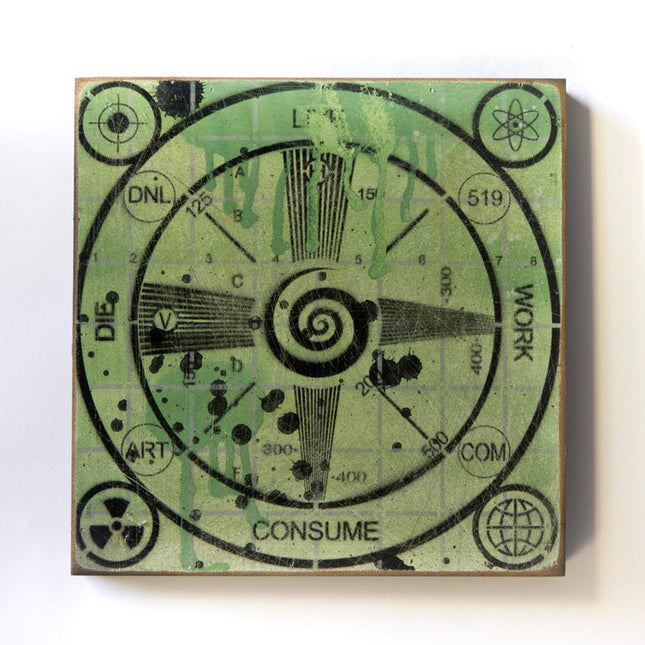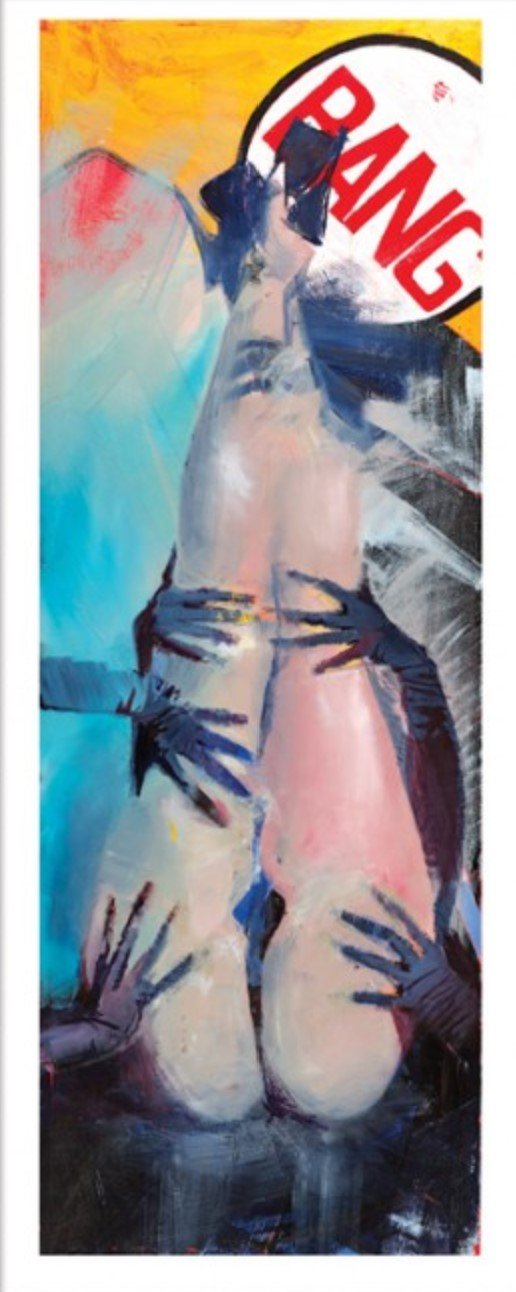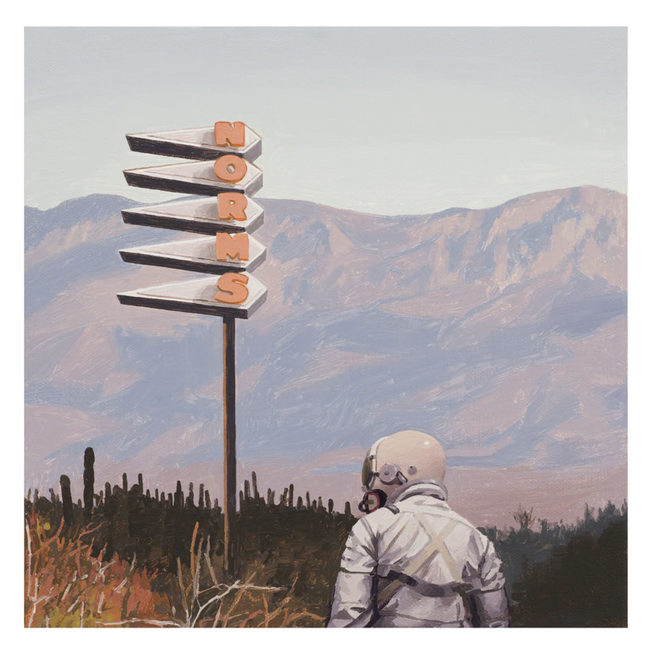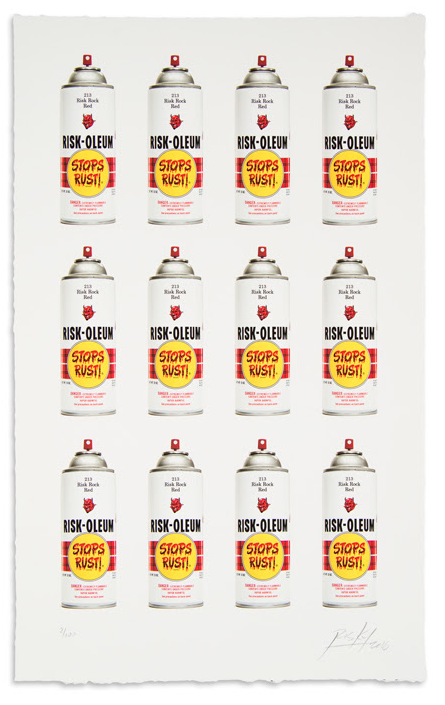
Advertising & Brands
-

Denial- Daniel Bombardier Live. Work. Consume. Die. 49 HPM Wood Stencil Print by Denial- Daniel Bombardier
Live. Work. Consume. Die. 49 Limited Edition Hand-Embellished Stencil, Spray Paint & Acrylic on Cradled Wood by Denial Graffiti Street Artist Modern Pop Art. 2015 Signed Limited Edition of 55 Artwork Size 12x12 "I have a fascination with television test patterns, there is something kind of apocalyptic about them. Like if you were ever seeing one then something terrible was happening. I also put some messaging in this piece that relates to what I believe is the true messaging in most television ads. Live, work, consume, die is really what TV is telling you to do, be it subliminally or not." - Denial Denial has evolved as one the most prominent figures of contemporary pop artists, who nonetheless, continue to stay relevant and is interested in generating thought-provoking commentary. He has a long history of exploring the boundaries of appropriation, which he uses as a means of subverting the value of cultural products, imprinted in the collective memory of the Western civilization. His work, in other words, is inviting the viewer to re-imagine our dystopian society as a way of confronting it, with humor and irony as the biggest tools of the artist.
$2,004.00
-

Camilo Pardo Bang Archival Print by Camilo Pardo
Bang Limited Edition Archival Pigment Prints on 310gsm Fine Art Paper by Camilo Pardo Graffiti Street Artist Modern Pop Art. The art that Camilo Pardo has created over the years is all over Detroit. A considerable amount of it is present on our freeways at any given moment of the day. Most recognized for his design work on the Ford GT, Camilo put verve in the steel curves and reminded us that a car's first internal combustion takes place in an artist's mind.
$352.00
-

Scott Listfield Norms Giclee Print by Scott Listfield
Norms Limited Edition Giclée Fine Art Prints on Signa Cotten Rag Paper by Graffiti Street Art and Pop Culture Artist Scott Listfield. 2022 Signed & Numbered Limited Edition of 75 Artwork Size 12x12
$495.00
-

Risk Rock Riskoleum Grid Archival Print by Risk Rock
Riskoleum Grid Archival Print by Risk Rock Limited Edition Print on 300gsm Cotton Rag Fine Art Paper Pop Artist Modern Artwork. 2017 Signed & Numbered Limited Edition of 100 Artwork Size 12x19 Archival Pigment Fine Art Riskoleum Grid Archival Print is a piece of artwork created by the artist Kelly Graval, also known as Risk Rock. Kelly Graval is a famous American graffiti artist and painter based in Los Angeles, California. He has been an influential figure in the street art and graffiti scenes since the 1980s. His unique style incorporates vibrant colors, geometric patterns, and intricate details. "Riskoleum Grid" is one of his archival prints, which means it is a high-quality reproduction of an original artwork made using advanced printing technology. Archival prints are designed to be long-lasting, with resistance to fading and deterioration. They are often produced in limited editions and signed by the artist, making them valuable collectibles.
$242.00





